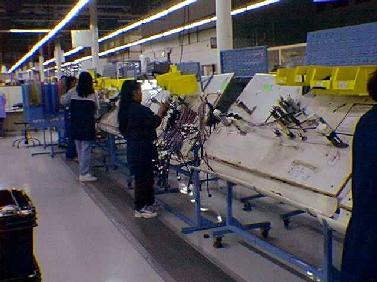
Figure 1: An assembly line to make automotive harnesses at United Technologies Automotive in Cuidad Juarez, Mexico. Photo courtesy of R. Villalobos and L. Munoz.

Figure 1: An assembly line to make automotive harnesses at United Technologies Automotive in Cuidad Juarez, Mexico. Photo courtesy of R. Villalobos and L. Munoz.
Professor Rene Villalobos of the Department of Industrial Engineering of Arizona State University and his co-workers Luis Munoz and Luis Mar set up a bucket brigade production line to manufacture automotive harnesses at United Technologies Automotive Plant #158 in Cuidad Juarez, Mexico.
The line is devoted to the assembly of wire harnesses for automobiles. A harness is a bundle of wires, held together with tapes and/or plastic tubing, that you see inside the engine compartment of a car and that feeds electrical signals to the different devices in the car.
The assembly of the harness is very labor intensive because it is difficult to automate the insertion of the terminal of the cables into the connectors or the taping, in which the operator covers the outside of the bundle of wires with electrical tape. The harness that Villalobos and his colleagues studied was the harness for the door of a Toyota Camry. It represents about twelve minutes of standard labor. Previously the line was organized as a traditional assembly line, but suffered from excessive work-in-process and intermittent starving and blocking. A symptom of this is the accumulation of work-in-process visible at the center of Figure 1.
Professor Villalobos reports that under bucket brigades the production rate of the assembly line increased about 10% and set new records for production in a single shift. In addition, the work-in-process dropped from a peak of 50 harnesses to a constant six, which were those in the hands of the six bucket-brigade workers. This in turn reduced setup times when changing production to a different type of harness, which happened 1-4 times a shift.
| Traditional assembly line | Bucket brigades | Improvement under bucket brigades | |
|---|---|---|---|
| Maximum daily production | 280 harnesses | 301 harnesses | +21 harnesses |
| Average daily production | 245 harnesses | 279 harnesses | +34 harnesses |
| Maximum efficiency | 85.2% | 91.6% | +6.4% |
| Average efficiency | 74.6% | 84.9% | +10.3% |
| Average work-in-process | 24 harnesses | 6 harnesses | -18 harnesses |
Professor Villalobos and his co-workers are studying the ability of bucket brigades to work well even in the presence of high labor turnover. The plant at Cuidad Juarez is one of the "twin plants" or maquiladoras that have grown up in the El Paso-Juarez region during the last fifteen years. Because of the rapid growth of these enterprises, there is little unemployment in the region and consequently turnover is high. Twelve percent per month has been typical during the 1990's.
High turnover hurts efficiency because trained workers are constantly replaced by new, untrained workers, who drag down the production rate. Because bucket brigades dynamically adjust to the speeds of the workers, as a new worker gains more experience and works more quickly, all his contributions are fully utilized.
To read more about this, contact Professor Villalobos for copies of his articles: